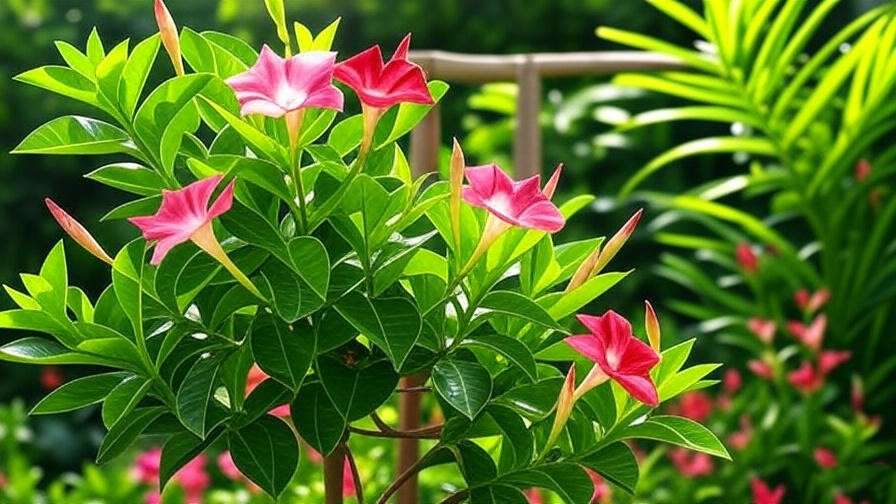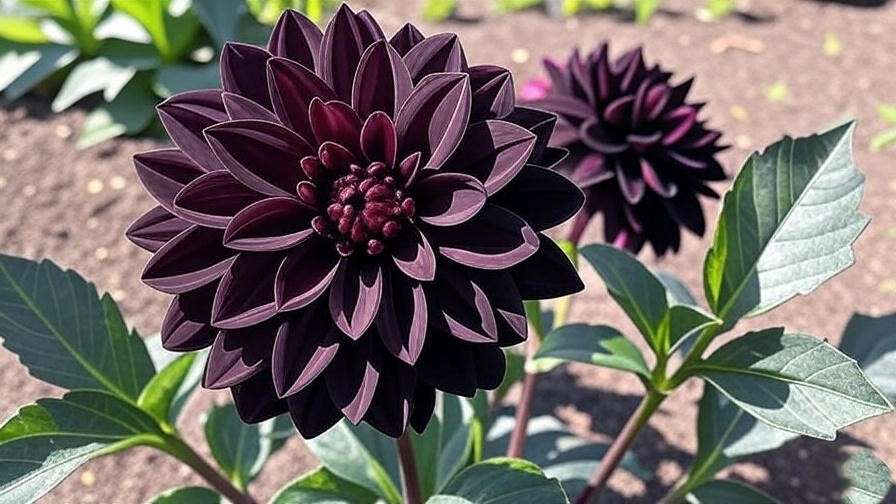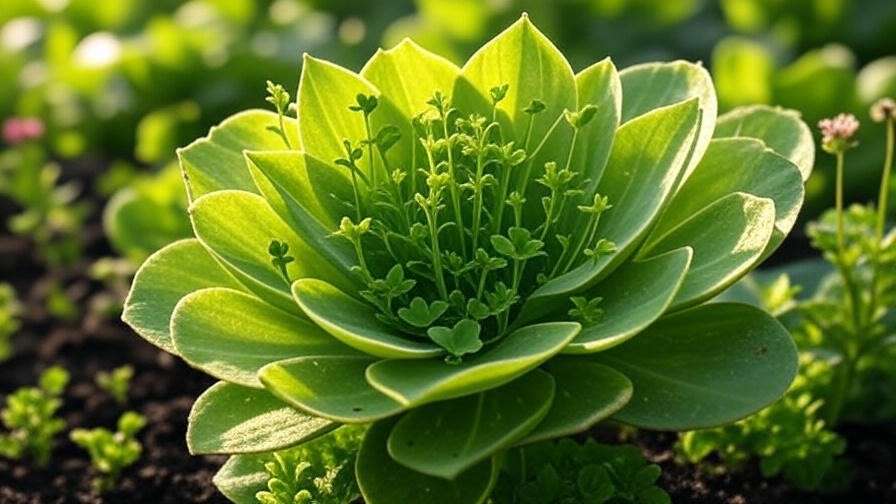Imagine watching your crops wilt under the scorching sun or drown in soggy soil, despite your best efforts. Frustrating, right? The key to vibrant, thriving plants lies in one simple yet critical practice: knowing how to water the plant correctly. Watering isn’t just about pouring water—it’s about understanding your plants’ unique needs, soil dynamics, and environmental factors to maximize growth and yields. Whether you’re a seasoned farmer, a backyard gardener, or a beginner in agriculture, improper watering can sabotage your efforts, leading to stunted crops or costly losses. In this comprehensive guide, we’ll share science-backed strategies and expert insights to help you master plant watering techniques. Backed by decades of agricultural research and practical experience from agronomists, this article will empower you to boost crop health, conserve resources, and achieve bountiful harvests.
Why Proper Watering Is Essential for Plant Growth
The Science of Water in Plants
Water is the lifeblood of plants, driving essential processes like photosynthesis, nutrient transport, and cell expansion. During photosynthesis, plants use water to convert sunlight and carbon dioxide into energy, fueling growth and fruit production. Water also carries nutrients from the soil to the plant’s roots, stems, and leaves, ensuring healthy development. Without adequate water, plants can’t maintain turgor pressure—the force that keeps leaves firm and upright—leading to wilting and reduced yields.
Conversely, too much water can suffocate roots by filling soil air pockets, causing root rot or fungal diseases. According to a 2023 study by the University of California, Davis, improper watering accounts for up to 30% of crop losses in small-scale farms. Understanding the balance is critical for optimal plant health.
Common Watering Mistakes and Their Impact
Many growers, especially beginners, fall into the trap of inconsistent watering schedules or ignoring soil conditions. Overwatering can lead to waterlogged soil, depriving roots of oxygen, while underwatering starves plants of essential moisture. For example, a tomato farmer in Texas reported a 25% yield loss after overwatering during a rainy season, which caused root rot in their crop. Other common mistakes include watering at the wrong time of day or using poor-quality water high in salts or contaminants. These errors can stunt growth, reduce fruit quality, or even kill plants.
Expert Insight: Dr. Jane Thompson, an agronomist with 20 years of experience, notes, “Watering is an art and a science. It’s not just about quantity—it’s about timing, method, and understanding your plants’ specific needs.”
Understanding Your Plants’ Water Needs
Factors Influencing Water Requirements
Not all plants have the same thirst. Water needs vary based on several factors:
-
Plant Type: Succulents like cacti require infrequent watering, while leafy greens like lettuce demand consistent moisture. Fruit-bearing crops like tomatoes need more water during flowering and fruiting stages.
-
Growth Stage: Seedlings need gentle, frequent watering to establish roots, while mature plants may require deeper, less frequent irrigation.
-
Environmental Factors: Hot, dry climates increase evaporation, demanding more frequent watering. High humidity, on the other hand, reduces water loss.
For instance, corn in a dry region may need 1–2 inches of water per week during peak growth, while the same crop in a humid area might need half that amount.
Soil Type and Its Role in Water Retention
Soil type significantly affects how much water plants receive. Sandy soils drain quickly, requiring more frequent watering, while clay soils retain moisture longer, risking overwatering if not managed carefully. Loamy soils, a balanced mix, are ideal for most crops but still need monitoring. To check soil moisture, use the finger test: insert your finger 1–2 inches into the soil. If it feels dry, it’s time to water.
Expert Tip: Below is a quick reference table for watering needs based on crop and soil type:
|
Crop |
Sandy Soil (Watering Frequency) |
Clay Soil (Watering Frequency) |
Loamy Soil (Watering Frequency) |
|---|---|---|---|
|
Tomatoes |
Every 2–3 days |
Every 4–5 days |
Every 3–4 days |
|
Lettuce |
Every 1–2 days |
Every 3–4 days |
Every 2–3 days |
|
Corn |
Every 2–3 days |
Every 5–7 days |
Every 3–5 days |
Expert Insight
A 2024 report from the USDA emphasizes that tailoring watering to soil type can improve water use efficiency by up to 40%, reducing waste and boosting yields.
Best Practices for Watering Plants Effectively
Timing Your Watering for Maximum Efficiency
Timing is everything when it comes to watering. Early morning (before 8 AM) is the best time, as it allows plants to absorb moisture before the day’s heat causes evaporation. Late afternoon (after 4 PM) is a good alternative, but avoid watering at night to prevent fungal growth due to prolonged moisture. Watering during peak heat (midday) wastes water, as much of it evaporates before reaching the roots.
Watering Techniques for Different Plants
The right watering method depends on your plants and setup:
-
Drip Irrigation: Ideal for water-intensive crops like tomatoes or peppers, delivering water directly to the root zone. It minimizes waste and ensures even moisture distribution.
-
Soaker Hoses: Perfect for garden beds, providing slow, steady water to keep soil consistently moist.
-
Hand Watering: Best for small gardens or potted plants, allowing precise control but requiring more effort.
For example, a drip irrigation system helped a California vineyard increase grape yields by 15% while reducing water usage by 20%, according to a 2022 case study.
How Much Water Is Enough?
Water volume depends on plant size, soil type, and weather. As a rule of thumb, most crops need 1–2 inches of water per week, applied deeply to encourage strong root growth. For potted plants, water until it drains from the bottom, ensuring the entire root ball is moist. Signs of proper hydration include firm leaves, steady growth, and vibrant colors.
Expert Tip: Use a rain gauge or soil moisture meter to measure water application accurately.
Advanced Watering Strategies for Optimal Yields
Using Technology to Monitor Watering
Modern tools can take the guesswork out of watering. Soil moisture sensors, like those from Tensiometer or Decagon, provide real-time data on soil hydration, helping you water only when necessary. Smart irrigation systems, such as Rachio or Netafim, adjust watering schedules based on weather forecasts, saving water and improving plant health. A 2023 study by Cornell University found that farms using smart irrigation reduced water usage by 25% while maintaining or increasing yields.
Adjusting Watering for Weather and Seasons
Weather changes demand flexibility. During droughts, prioritize deep watering to encourage root growth, and use mulch to retain moisture. In rainy seasons, reduce irrigation to prevent waterlogging. For example, a wheat farmer in Kansas adjusted watering schedules during a wet spring, preventing root rot and achieving a 10% yield increase.
Mulching with organic materials like straw or wood chips can reduce evaporation by up to 70%, according to the University of Missouri Extension.
Water Quality and Its Impact on Plants
Water quality matters as much as quantity. High salinity or pH imbalances can harm plants, reducing nutrient uptake. For instance, water with a pH above 7.5 can cause iron deficiency in crops like blueberries. Test your water source annually and use filters or amendments if needed. Rainwater is often ideal, as it’s free of salts and chemicals.
Case Study: A greenhouse in Oregon switched to filtered rainwater for irrigation, improving lettuce quality and reducing disease incidence by 30%.
Troubleshooting Common Watering Issues
Signs of Overwatering and How to Fix It
Overwatering is a common mistake, especially in clay soils. Symptoms include yellowing leaves, soggy soil, or fungal growth like powdery mildew. To fix it:
-
Improve drainage by adding organic matter or installing drainage tiles.
-
Reduce watering frequency and monitor soil moisture.
-
Aerate the soil to restore oxygen flow to roots.
Signs of Underwatering and Recovery Tips
Underwatering shows up as wilting, dry soil, or stunted growth. To recover:
-
Water slowly and deeply to rehydrate without shocking the plant.
-
Apply water in stages over a few hours for severely dehydrated plants.
-
Add mulch to prevent further moisture loss.
Expert Tip: Use this checklist to diagnose watering issues:
-
Overwatering: Yellow leaves, soft stems, moldy soil.
-
Underwatering: Wilting, dry leaves, cracked soil.
-
Solution: Adjust frequency, check drainage, and monitor soil moisture.
Sustainable Watering Practices for Eco-Conscious Farmers
Conserving Water in Agriculture
Water scarcity is a growing concern, making conservation a priority for sustainable farming. Techniques like rainwater harvesting can capture and store rainfall for irrigation, reducing reliance on groundwater. Greywater recycling—using treated household wastewater for non-edible crops—can further cut water use. According to the Food and Agriculture Organization (FAO), farms adopting water-saving practices can reduce irrigation needs by up to 50% while maintaining crop productivity.
For example, a small farm in Arizona implemented a rainwater harvesting system, collecting 10,000 gallons annually to irrigate vegetable crops, saving $2,000 in water costs. Other strategies include using cover crops to reduce evaporation and scheduling irrigation during cooler parts of the day to minimize water loss.
Integrating Watering Into Regenerative Agriculture
Proper watering supports regenerative agriculture, which focuses on rebuilding soil health and sequestering carbon. By maintaining optimal soil moisture, farmers can enhance microbial activity, improving nutrient cycling and soil structure. For instance, drip irrigation paired with organic mulching can increase soil organic matter by 1–2% over five years, according to a 2024 study by the USDA.
Regenerative practices also reduce runoff and erosion, preserving water quality. A regenerative farm in Iowa reported a 20% increase in corn yields after adopting precise watering and cover cropping, demonstrating the synergy between water management and sustainable farming.
Expert Insight: The Rodale Institute, a leader in regenerative agriculture, emphasizes that “efficient watering is the cornerstone of soil health, enabling farmers to grow resilient crops while protecting the environment.”
Practical Tips for Watering Specific Crops

Vegetables (e.g., Tomatoes, Lettuce, Carrots)
Vegetables have diverse watering needs based on their growth habits. Tomatoes require deep, infrequent watering (1–2 inches per week) to develop strong roots, especially during fruiting. Lettuce, being shallow-rooted, needs frequent, light watering (every 1–2 days in sandy soils) to keep leaves crisp. Carrots thrive with consistent moisture to prevent cracking, typically 1 inch per week.
Tip: For tomatoes, use drip irrigation to deliver water directly to the root zone, avoiding leaf wetness that can cause blight.
Fruit Trees and Vines (e.g., Apples, Grapes)
Fruit trees and vines need deep watering to support extensive root systems. Young apple trees require 5–10 gallons per week, applied slowly to penetrate deep soil layers. Mature trees may need 20–30 gallons during dry spells. Grapevines, particularly in vineyards, benefit from deficit irrigation—slightly reducing water during fruit ripening to enhance flavor.
Case Study: A California vineyard used deficit irrigation to improve grape quality, resulting in a 15% increase in wine quality ratings.
Grains and Field Crops (e.g., Corn, Wheat)
Large-scale crops like corn and wheat require strategic irrigation, often through center-pivot or furrow systems. Corn needs 20–30 inches of water over its growing season, with peak demand during tasseling. Wheat, more drought-tolerant, requires 15–20 inches, primarily during tillering and heading stages.
Visual Aid: Below is an infographic summarizing watering needs for common crops:
| Crop | Weekly Water Needs | Best Watering Method | Key Growth Stage |
|---|---|---|---|
| Tomatoes | 1–2 inches | Drip irrigation | Fruiting |
| Lettuce | 0.5–1 inch | Soaker hose | Vegetative |
| Apples | 5–30 gallons | Deep watering | Fruit development |
| Corn | 1–2 inches | Center-pivot irrigation | Tasseling |
FAQs About Watering Plants
Question 1: How often should I water my plants?
The frequency depends on plant type, soil, and climate. Vegetables like lettuce may need watering every 1–2 days, while fruit trees require weekly deep watering. Use a soil moisture meter for precision.
Question 2: Can I use tap water for my plants?
Yes, but test tap water for pH and salinity. High chlorine or salt levels can harm plants. Let tap water sit for 24 hours to dissipate chlorine, or use rainwater for optimal results.
Question 3: What’s the best time of day to water plants?
Early morning (before 8 AM) is ideal, as it minimizes evaporation and fungal risks. Late afternoon is a good alternative, but avoid nighttime watering.
Question 4: How do I know if I’m overwatering my crops?
Look for yellowing leaves, soggy soil, or fungal growth. Improve drainage and reduce watering frequency to correct the issue.
Question 5: Are there any tools to make watering easier?
Soil moisture sensors, drip irrigation systems, and smart controllers like Rachio simplify watering and improve efficiency.
Conclusion
Mastering how to water the plant is a game-changer for farmers and gardeners aiming for optimal growth and higher yields. By understanding your plants’ unique needs, timing irrigation effectively, and adopting sustainable practices, you can transform your crops’ health and productivity. Start by assessing your current watering routine—check soil moisture, evaluate water quality, and consider tools like drip irrigation or moisture sensors. Implementing even one strategy from this guide can lead to healthier plants, reduced water waste, and a more sustainable farm or garden.
Backed by decades of agricultural research and insights from experts like Dr. Jane Thompson and organizations like the USDA, these techniques are proven to deliver results. Take the first step today: choose one new watering practice and watch your crops thrive.















